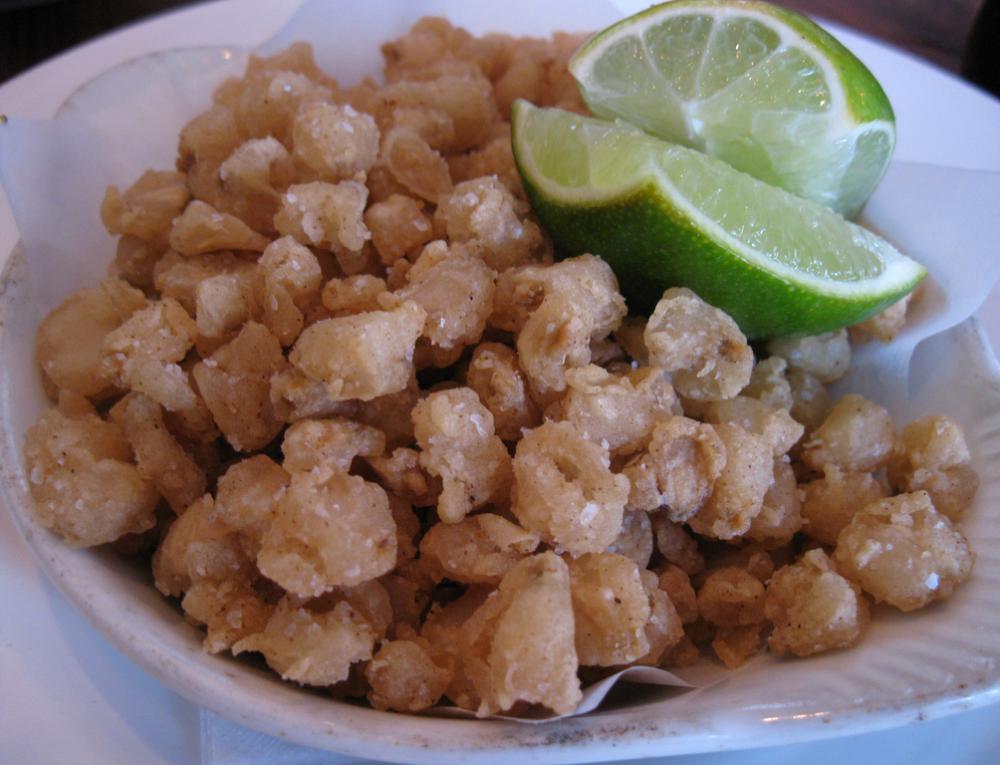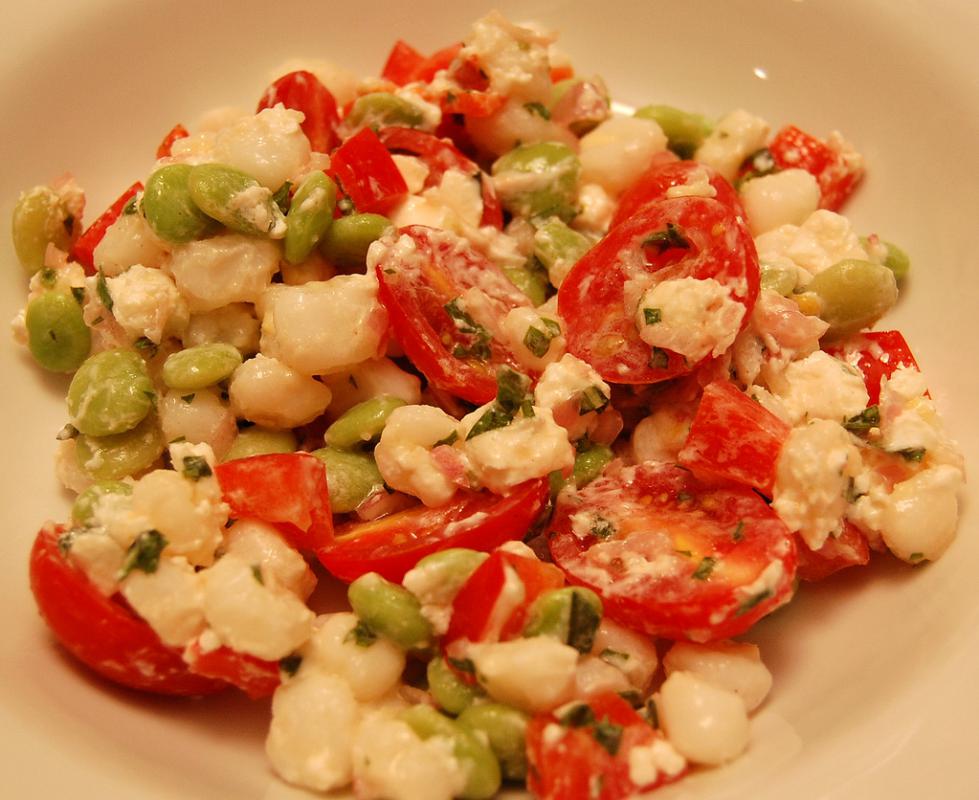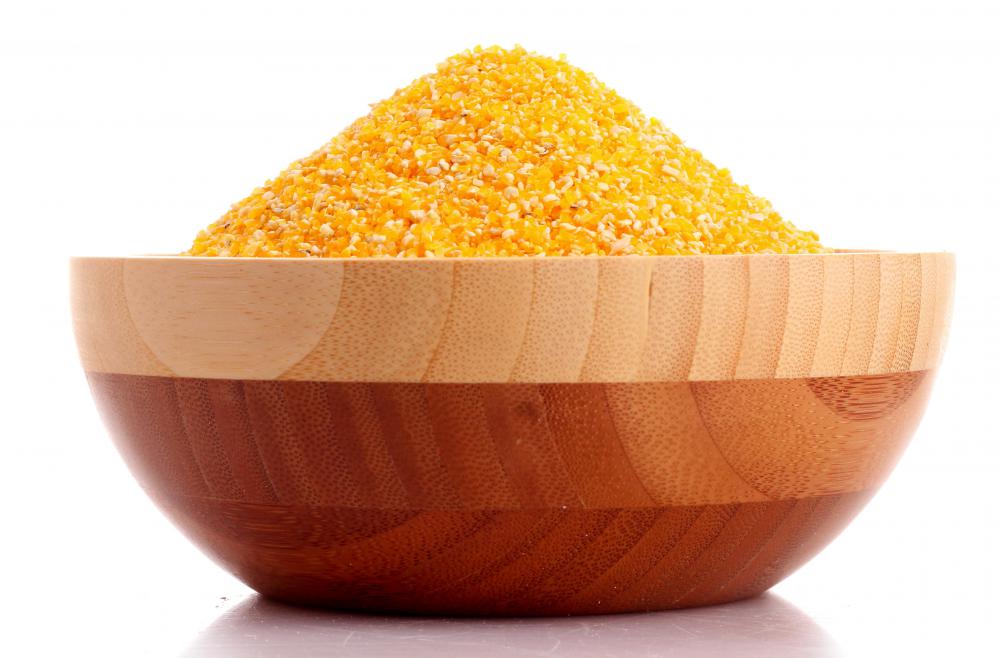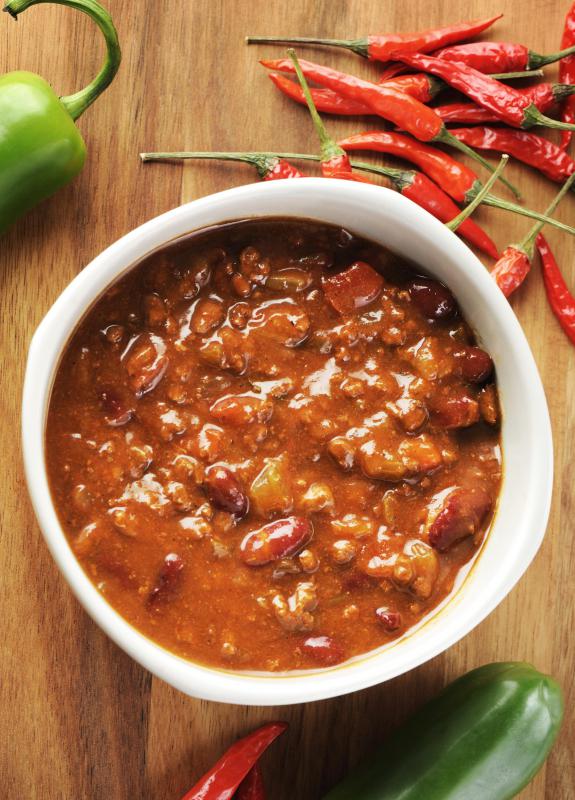At DelightedCooking, we're committed to delivering accurate, trustworthy information. Our expert-authored content is rigorously fact-checked and sourced from credible authorities. Discover how we uphold the highest standards in providing you with reliable knowledge.
What is Hominy?
Hominy refers to corn kernels without their germ and their hull, or bran. The germ and hull might be removed by soaking the corn in a special type of solution or by crushing the kernels and then sifting them out. It can be served whole or ground, and as a cereal or as a vegetable. The ground kernels can also be pressed into patties and fried. This dish is especially popular in the southern United States.
How It's Made

To make hominy, the corn can be soaked in an alkali solution, such as weak lye. This type is sometimes called lye hominy. When the germ and hull are removed mechanically by crushing and sifting, the variety is often referred to as "pearl." Removing the germ prevents the corn kernels from sprouting while they are being stored.
Other Names and Variations

There are many other names for the variations of hominy. It might be called yellow or white, depending on whether it was made with white corn or yellow corn. It's often called samp when it's coarsely ground, and when ground into small grains, it's often called grits, hominy grits, or little hominy. In some places, when the kernels are whole, it is called posole.
Preparation

Hominy usually is boiled until tender and then served like mashed potatoes would be. Grits are often simmered with milk or water until they become very thick. This mixture can then be served like a cereal, or it can be chilled, pressed into patties and then fried. Posole is often used to make hearty stews that include chili peppers and pork. When finely ground, this type of corn can even be used to make dough for tamales or tortillas.
History

American colonists, who were unfamiliar with corn, had to learn from the native Indians how to make the tough grain edible. The pioneers prepared it by soaking the kernels in a weak wood-based lye until the hulls floated to the surface. They called this dish samp. The name "hominy" came from an Algonquin Indian word that meant something that had been ground, beaten, or treated.
AS FEATURED ON:
AS FEATURED ON:














Discussion Comments
I came to experience hominy and grits in mid life. Both are delicious both. A shot of tabasco on the hominy and a glob of butter on grits to maintain my cholesterol level. Life is good.
I regret not getting acquainted many years earlier. If it looks interesting, nibble on it and you may find another joy in life. I enjoy folks who are picky eaters. It leaves the good stuff for me.
Is United States 'hominy' genetically modified?
anon254654 said, "Did you guys lose your taste buds in the war?" I'm not sure why parents and teachers don't teach kids this simple and life-enhancing fact, but your taste buds don't determine what tastes good or bad to you. Rather, it's in your mind, and you can therefore change your tastes by changing your attitude. To suggest there's something wrong with someone else's taste because they like something you don't is just not right. Your own preferences do not define what is good or bad.
You all are both right and just arguing the geographical and cultural differences. But it's always fun to play the north-south game.
I soaked and then cooked dried hominy for over four hours. What appears to be skin partially peeled away from the hominy. Is the skin edible?
Just tried hominy for the first time. It will be the last. Disgusting. Did you guys lose your taste buds in the war?
All this talk about hominy grits. I know I don't like grits, so what the heck is the stuff they sell in the grocery store in cans called hominy? It looks like corn. Can you eat it like canned corn? Signed, a damned yankee and proud of it.
I don't like hominy or grits, but I was raised up to enjoy cooked corn meal mush for breakfast -- made from Aunt Jemima yellow corn meal. However, since commercial corn meal is degerminated I now grind my own corn meal using yellow pop-corn kernels and a coffee grinder which gives me a whole-grain cereal (mush) delightful to eat. --Richard L., Utah.
I'm a yankee and I sure do know the difference between hominy and grits. My parents were immigrants from Finland and Sweden I was born in CT and and I love both hominy and grits! and vive le difference! *smile*
I live in La. I am 72 years young, have never made Hominy, but i love it, my mother always cooked Hominy when we had a big pot of mustard greens and along with that we had hot water corn bread.
The grits you buy at the store are made with dried hominy, but for the ones who think that grits are really white corn meal should cook up a cup of white corn meal. That is called mush, and it is good, but nothing like the grits we know today.
In days gone by when they ground corn for meal, they saved the coarse larger meal and called the grits. It takes a long time to cook, and is very good, but tastes nothing like hominy grits.
While on the subject of grits, instant grits are not nearly as good as the grits you cook for 20 min. If you take hot grits and pour them up in a dish, let them cool and store in the fridge, then slice this up about 3/8 in. slices, then run through an egg wash and fry. Eat with a little ketchup. Not bad! You want to eat them while they are hot.
anon 18092: you are wrong. hominy grits indeed do exist. you simply make hominy by boiling corn in lye water, then drain and let the kernels of corn dry. Now coarse grind these dry kernels and you have hominy grits. Very delicious. I'm eighty years old and have made many batches of hominy grits.
All you Southerners who think Yankees are ignorant because they say "hominy grits" are ignorant yourselves. "Grits" are made from hominy - but with more processing. After the whole kernels have been soaked in an alkaline (not acid) lye or lime solution and cooked until soft and the hulls and germ removed with copious rinsing, the resultant hominy is dried and then coarsely ground to make "grits."
Cornmeal is corn that has been finely ground but is not processed with alkaline before drying and grinding.
One small detail in a previous post mentioned the lye as an acid that removes the corn kernel husks in hominy preparation. It's actually basic (alkaline); toward the other end of the pH scale.
In response to anon9323, the lye is simply rinsed away. I don't know about modern processed hominy, but traditionally, the hominy will retain some flavor from the lye. The lye is just an acid, and can impart some tasty flavor.
Actually, doesn't matter if you're from Alabama or 80 years old. Grits are actually ground hominy. Not white corn meal. Simple to read the package. You can actually purchase yellow and white hominy grits and no, the yellow is not corn mush. White hominy from white corn yellow from yellow corn. Just as you can purchase white and yellow hominy.
Tell you what. Make a batch of corn bread and make it with grits instead of corn meal and tell me if it turns out the same. -not. Take any recipe you have calling for corn meal and substitute grits and tell me they turn out the same. -not.
I dare anyone to make grits properly, make polenta properly, get blindfolded and served, then tell me they both taste the same. -not.
The lye? Is simply used to remove the husk from the corn kernal and is rinsed off after. You can't taste it.
I agree completely with anon16463! While I grew up in several parts of the US (thanks to the Air Force), My daddy was born and raised in Alabama and grits were a staple. My mom was born and raised in Missouri and she was able to cook both grits and hominy for my dad and us kids. They are truly a different food from one another. While both may begin as corn...the end product is a "whole 'nother story"!
Think ground beef and T-Bone Steak. Both begin as a cow, but the end product is a "whole 'nother story"! I love both, grits and hominy, but believe me...they are NOT the same and as far as "Hominy Grits"...well, that's a creature that just doesn't exist! "Ground T-Bone" anyone?? LOL
I'm an eighty-year-old country Southerner (central Louisiana), and have eaten "grits" and "hominy" all my life. Believe me, they are entirely different foods. "Grits" are essentially white cornmeal, boiled into a stiff mush, while "hominy" consists of large soft de-hulled whole kernels of corn with a very different taste. To us, the phrase "hominy grits" has always been sneered at as an ignorant Yankeeism.
What is the nutritional value of grits?
What happens to the lye? It seems that would not be very tasty. swad
Actually, "posole" is not the Mexican name for "big hominy". It is the dish that is made with "nixtamal", the Mexican name for "big hominy". Nixtamal is prepared with calcium hydroxide (lime) instead of sodium hydroxide (lye) so it may have a slightly different taste.
Post your comments